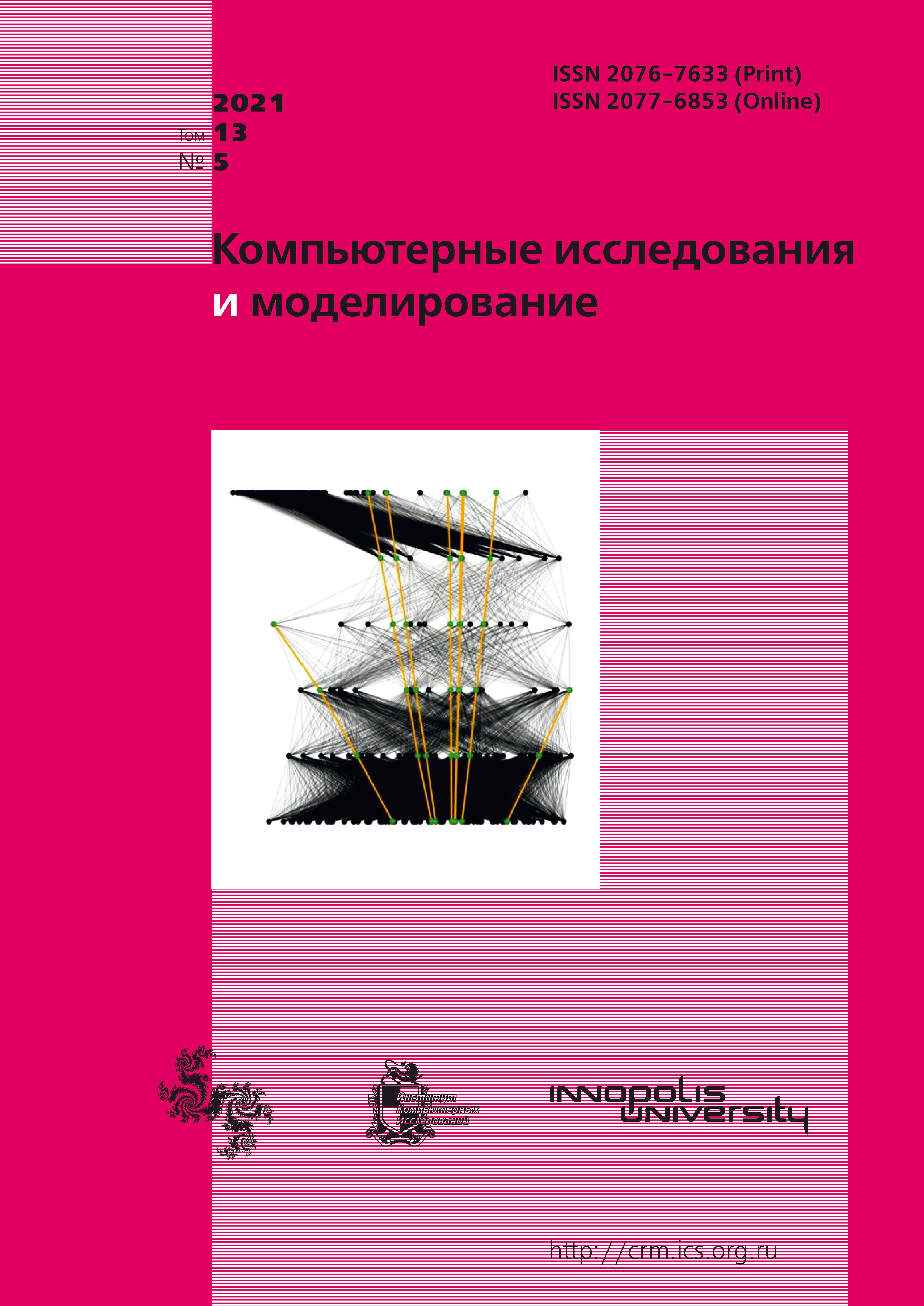All issues
- 2024 Vol. 16
- Issue 1 (special issue)
- 2023 Vol. 15
- 2022 Vol. 14
- 2021 Vol. 13
- 2020 Vol. 12
- 2019 Vol. 11
- 2018 Vol. 10
- 2017 Vol. 9
- 2016 Vol. 8
- 2015 Vol. 7
- 2014 Vol. 6
- 2013 Vol. 5
- 2012 Vol. 4
- 2011 Vol. 3
- 2010 Vol. 2
- 2009 Vol. 1
Features of numerical solutions of some problems for cnoidal waves as periodic solutions of the Korteweg – de Vries
 pdf (4490K)
pdf (4490K)
This article discusses the features of the numerical solutions of some problems for cnoidal waves, which are periodic solutions of the classical Korteweg – de Vries equation of the traveling wave type. Exact solutions describing these waves were obtained by communicating the autowave approximation of the Korteweg – de Vries equation to ordinary functions of the third, second, and finally, first orders. Referring to a numerical example shows that in this way ordinary differential equations are not equivalent. The theorem formulated and proved in this article and the remark to it include the set of solutions of the first and second order, which, in their ordinal, are not equivalent. The ordinary differential equation of the first order obtained by the autowave approximation for the description of a cnoidal wave (a periodic solution) and a soliton (a solitary wave). Despite this, from a computational point of view, this equation is the most inconvenient. For this equation, the Lipschitz condition for the sought-for function is not satisfied in the neighborhood of constant solutions. Hence, the existence theorem and the unique solutions of the Cauchy problem for an ordinary differential equation of the first order are not valid. In particular, the uniqueness of the solution to the Cauchy problem is violated at stationary points. Therefore, for an ordinary differential equation of the first order, obtained from the Korteweg – de Vries equation, both in the case of a cnoidal wave and in the case of a soliton, the Cauchy problem cannot be posed at the extremum points. The first condition can be a set position between adjacent extremum points. But for the second, third and third orders, the initial conditions can be set at the growth points and at the extremum points. In this case, the segment for the numerical solution greatly expands and periodicity is observed. For the solutions of these ordinary solutions, the statements of the Cauchy problems are studied, and the results are compared with exact solutions and with each other. A numerical realization of the transformation of a cnoidal wave into a soliton is shown. The results of the article have a hemodynamic interpretation of the pulsating blood flow in a cylindrical blood vessel consisting of elastic rings.
Indexed in Scopus
Full-text version of the journal is also available on the web site of the scientific electronic library eLIBRARY.RU
The journal is included in the Russian Science Citation Index
The journal is included in the RSCI
International Interdisciplinary Conference "Mathematics. Computing. Education"






